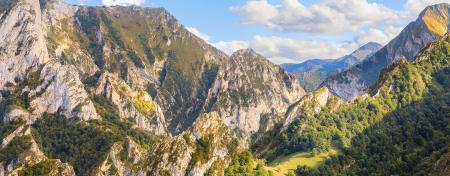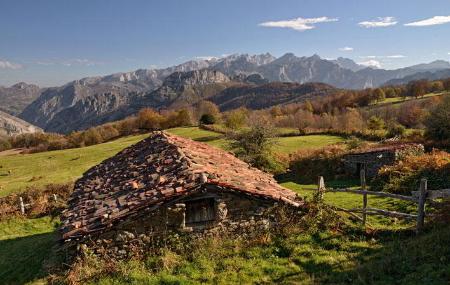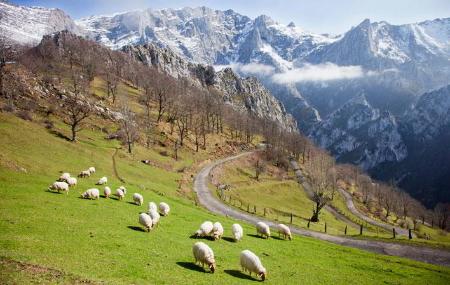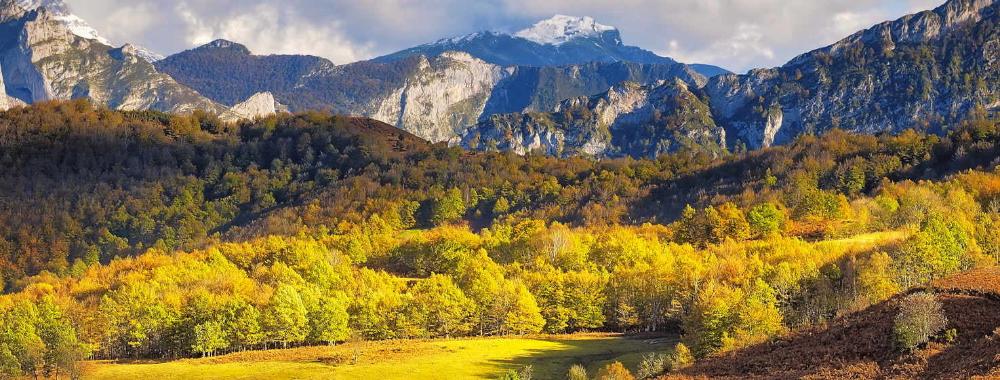
Parque Natural de Ponga
- Title Ponga Oriente de Asturias
- Extension Extension: 255 km 2
- Maximum elevation Maximum elevation: 2.142 m. Peña Ten
Images
Info
En el Parque Natural de Ponga los perros deben de ir bajo el control efectivo de su dueño, sujetos con correa, excepto perros guardianes de rebaños, perros de caza en cacerías y perros guía.
El Parque Natural de Ponga fue declarado Reserva de la Biosfera por la UNESCO, en el año 2018. Entre sus alineaciones montañosas más importantes destaca el sector de la Cordillera Cantábrica que forma su límite meridional y que constituye la divisoria de aguas entre las cuencas del Sella y del Duero, albergando picos tales como El Abedular (1.813 m.), Les Pandes (1.879 m.) y Peña Ten (2.142 m.), entre otros. El Cordal de Ponga forma su límite occidental e incluye cumbres notables, tales como Maciéndome (1.899 m.), Tiatordos (1.951 m.) y Campigüeños (1.838 m.), entre otros.

Los ríos más importantes del concejo son el Sella, que atraviesa la zona oriental del territorio para seguir su curso por Amieva, y el Ponga, que recorre el concejo de sur a norte. Entre los afluentes locales del Sella destacan el arroyo Roabín, río Mojizo, río Porciles y Santa Bustia. Los afluentes más importantes del Ponga son los ríos de Taranes y del Valle Moro. La mayor parte de estos valles fluviales son angostos y sus laderas presentan pendientes muy elevadas, siendo los casos más espectaculares el Desfiladero del Ponga y el Desfiladero de los Beyos.
El Parque de Ponga mantiene una elevada diversidad ambiental, representativa de las montañas centro-orientales de Asturias, así como un notable grado de conservación de sus recursos naturales (geológicos, vegetales y animales).
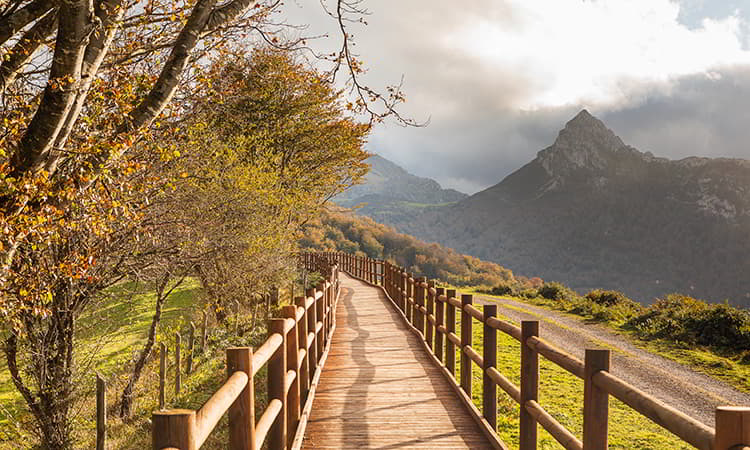
Desde el punto de vista geológico el territorio del Parque Natural de Ponga se sitúa en la denominada "Unidad del Ponga", cuyo rasgo estructural más destacado es la presencia de una serie de cabalgamientos de trazado sinuoso, debido a la existencia de pliegues transversales a los mismos. Existe además un importante conjunto de fracturas que cortan a ambos grupos de estructuras, presentando algunas de ellas una notable extensión lateral, como sucede con la Falla de Ventaniella que, debido a la Orogenia Alpina, ha sufrido un desplazamiento vertical con elevación del bloque nororiental, dando así lugar a la alineación montañosa del Cordal de Ponga.
ACTIVIDADES NO PERMITIDAS
- Causar molestias a la fauna o dañar a la flora.
- La acampada libre, caravanas u otros albergues móviles (excepto el vivac en ZUG, ZUA y ZAM).
- Las actividades acuáticas como el descenso de cañones y barrancos, aguas bravas, rafting, etc. (con la excepción de los cañones de Viboli y Carangas, que será uso autorizable).
- Las actividades deportivas con vehículos a motor.
- Las actividades aéreas deportivas de vuelo sin motor, paracaidismo, parapente y similares.
Plant life
El Parque Natural de Ponga presenta un excelente grado de conservación, con un 37% del territorio cubierto por robledales, abedulares, fresnedas, alisedas y, sobre todo, hayedos. Dentro del parque se encuentra la Reserva Natural Parcial de Peloño, una de las mayores extensiones continuas de hayas de Asturias.
Estos bosques se combinan con prados, pastos y matorrales, así como con plantaciones de castaño en torno a San Xuan/San Juan de Beleño, Abiegos y Tarañes, y en las zonas de mayor altitud y en las laderas del Tiatordos aparecen comunidades vegetales adaptadas a zonas de alta montaña.
En el parque está presente flora incluida en el Catálogo de Flora Amenazada del Principado de Asturias; entre estas especies se encuentran el tejo, el acebo, el narciso asturiano y la genciana.
Wildlife
El Parque Natural de Ponga reúne la fauna característica de la montaña centro oriental asturiana. Entre los mamíferos, además de las especies típicas de montaña, se pueden observar de forma esporádica ejemplares de oso pardo. La nutria y el desmán (especie de topo de hocico alrgado y fléxible)están presentes en la mayoría de los ríos, lo que refleja la buena calidad de sus aguas. En praderías es abundante la liebre europea, que encuentra en Ponga uno de sus últimos refugios. Destaca también la presencia de ciervos, corzos, rebecos y jabalíes.
El parque alberga una avifauna rica y diversa. Destacan el urogallo cantábrico, el pico mediano y el pico negro, catalogados como especies sensibles a la alteración de su hábitat en el Catálogo Regional. También están presentes rapaces como águila real, el buitre leonado, el alimoche común y el azor. En las zonas más elevadas se observan especies ligadas a la alta montaña, como el gorrión alpino y la perdiz pardilla.
Map
Location
El Parque Natural de Ponga se localiza en el sector centro oriental de la Cordillera Cantábrica, incluyendo la totalidad del territorio del concejo de Ponga.
Las vías de comunicación principales son las carreteras N-625 (Cangas de Onís-Riaño), que discurre siguiendo el curso del río Sella, y la AS-261 (Puente de los Grazos-Beleño). Además, otras carreteras locales y pistas comunican entre sí buena parte de los núcleos de población y las zonas altas de la subcuenca del Ponga (río de Ventaniella) o del Monte Peloño.
Centro de Interpretación del Parque Natural de Ponga
33557 San Xuan/San Juan de Beleño. Ponga
Teléfono 985 843 113


